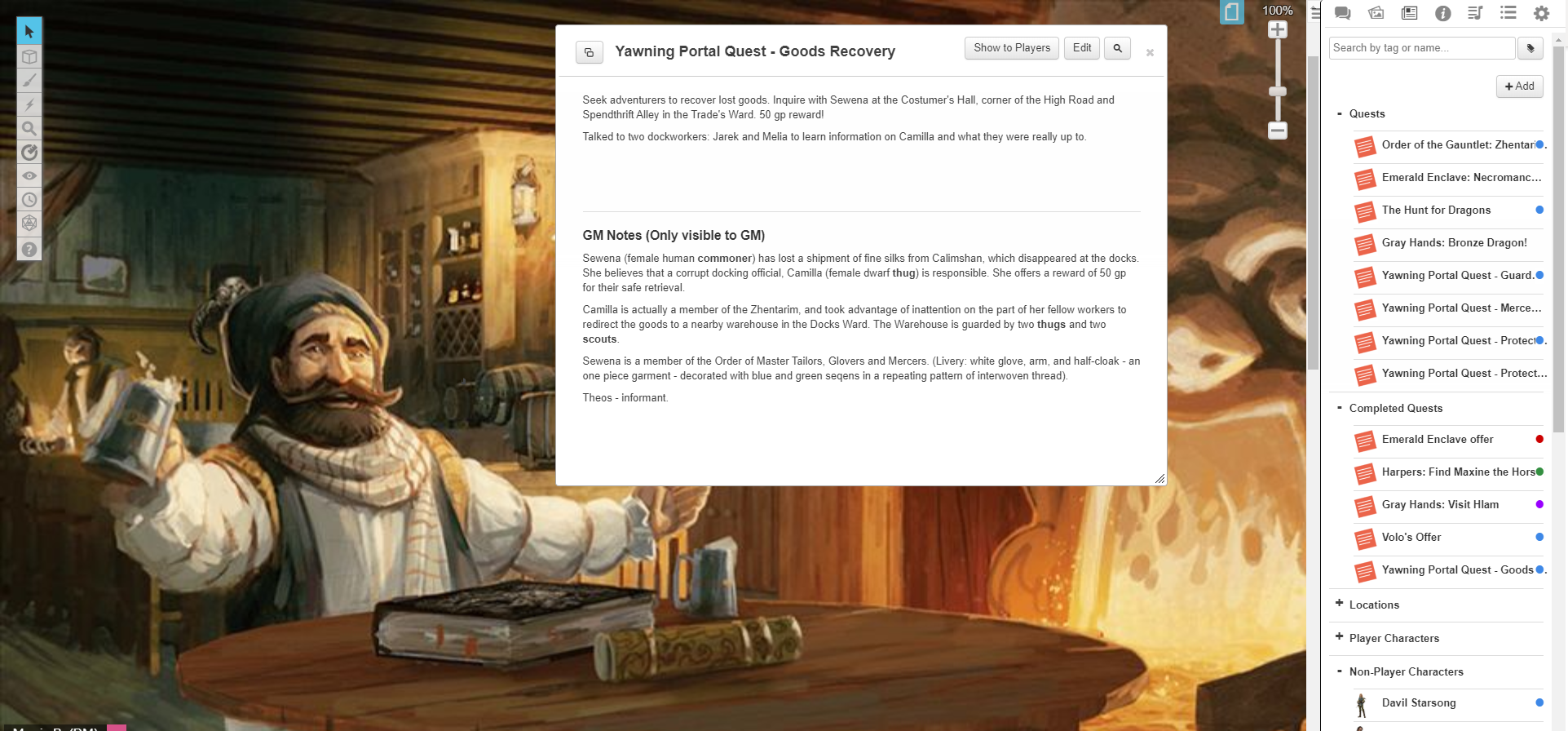It has been about a month since the last game I played with people face-to-face. Although I spent a week or so not playing games, I am now back to my regular schedule of three games a week. And the primary tool that I am using for these games is Roll20.
Roll20 is a virtual tabletop that allows you to display images, handouts, maps, and suchlike to the players, as well as handling rolling dice, tracking initiative, and providing a surface for a battle-map and tokens.
It also has video and audio chat functionality, though most people I know have said “don’t do that” – use Discord or another app for voice. After struggling with Discord for a while, I have gone to Skype. The first game we played with that app last night worked a lot better than Discord, but everyone differs in which program works best.
Now, while Roll20 is useful for providing tokens and a battle-map, the function that I am finding most interesting is the journal.
What is the journal? It is a collection of pictures and text organised into handouts and folders that you can share with one or more players.
The journal has proved very useful in the sandbox-style games I am running. For both the Phandalin and Waterdeep campaigns, I keep a folder of active quests, which detail what the goal is and what the characters have learnt so far. Another folder holds completed quests. There is a folder for non-player characters, one for player characters, and yet another for locations.
Writing journal entries is a level of preparation above what I usually do, and it requires time. Though I tend to improvise more than prepare, running games on Roll20 has caused me to change my approach somewhat.
With the quests, I also put GM notes in the handout (only visible to me, of course). These are my adventure notes. They are typically not that detailed but are enough to run the encounter.

You can see some of the ways to use the journals – including full notes and hyperlinked entries – in some of the free adventures available on Roll20. Running The Lightless Beacon (a free Call of Cthulhu scenario) gave me a good look at advanced journal use. I would advise that if you are starting, you load up one of these modules and see how they use and organise journals.
Character sheets for the players and DM characters also exist in the journal. Even if you do not use the Roll20 character sheet (perhaps you use D&D Beyond and the Beyond20 integration extension), you can store the token for the character in the entry. After you assign control to that player, they can drag it onto the map. Otherwise, you need to copy them manually whenever you go to a new page.
What basic tasks should you learn to use the journal effectively?
- Create folders
- Create characters
- Create handouts
- Move handouts and characters from one folder to another
- Add art to journal entries
- Add tokens to characters
- Share journal entries with players
- Cause a journal entry to pop-up on players’ screens (that’s the “Show To Players” button)
The structure of the folders is up to you. I currently have these folders for my Waterdeep game:
- Quests
- Completed
- Locations
- Player Characters
- Non-Player Characters
- Factions
- Handouts
Yes, you can nest folders!
One of the exciting aspects is that I can see exactly how my preparation gets used in the game. I hope that by using the journal, I get a better handle of some aspects of DMing that I have neglected recently!

Hi,
Thanks for your blog and given information, can find a lot of usefull materials as quite a new DM. We have finished recently playing DDEX2-1 – City of Danger, my first experience of DMing and friends to roleplay in DnD.
I found it quite difficult to draw and show every movement via cam.
Few days ago proceeded to DDEX2-2 on roll20 and your tips are so helpful.
Have a nice week and wish to get back to real life games 🙂